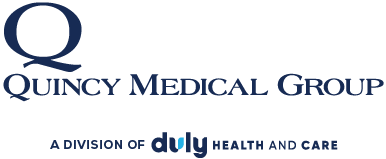October is AAC Awareness Month, which stands for Augmentative and Alternative Communication.
AAC is any tool or strategy an individual uses to communicate other than verbal communication, such as written expressive, communication boards, sign language, non-verbal communication such as gestures and facial expressions, and sign language.
Quincy Medical Group (QMG) Pediatric Speech Language Pathologists Amanda Wagner and Megan Siemens specialize in AAC. They say everyone deserves a voice and AAC provides that for individuals.
Wagner and Siemens said those who benefit from AAC are children who are non-verbal (unable to formulate words), minimally verbal (may be able to say words but do not use for functional communication) or those that have severe speech sound disorders (may say word approximations but are not able to be understood across all social environments). Children with a wide variety of diagnoses may benefit from AAC such as Autism, Down syndrome, Cerebral Palsy, and Childhood Apraxia of Speech.
“There are no prerequisites skills needed to use AAC. Requirements to receive an AAC device should not be based on motor abilities, cause and effect knowledge, cognitive level, or receptive language skills,” explained Wagner.
One form of AAC that has been found to be extremely effective in has been using a computer with a “voice,” called a speech-generating device (SGD). This custom tablet utilizes highly predictive and researched picture vocabulary that when selected a speech output is generated.
“There are a wide variety of speech generating devices and researched vocabulary sets such as Touch Chat Word Power, Words for Life (LAMP), Tobii Dynavox Snap+core first, and Prologuo2Go, just to name a few,” said Siemens. “Each vocabulary set has its strengths and weaknesses and can be customized to each individual communication need.”
AAC intervention utilizing a SGD has significant benefits in the development of communicative competence and language skills, it also has shown positive benefits in the development of natural speech production.
“Use of AAC gives children a consistent, universal and effective way to communicate, reducing negative behaviors that are associated with communication breakdowns including tantrums, refusals, etc.,” Wagner said. “It also helps alleviate stress among families and caregivers who were having to guess as wants/needs and deal with behaviors related to lack of communication.”
In addition, Wagner said giving a child a way to communicate also increases overall independence throughout daily social environments and increases confidence to interact with peers and adults.
A SGD is personalized to the individual who utilized it to support their needs.
“A SGD allows for the vocabulary to be highly customizable with the patient’s preferred activities and items such as food, drinks, movies, books, toys, etc. and personal information such as birthdate, hobbies, and exciting news in order to encourage initiation of social interactions and conversations pertaining to their specific interests,” said Siemens.
If you have concerns about your child’s speech, speak with your child’s healthcare provider or call the QMG Pediatric Therapy department at (217) 222‑6550, ext. 3418 or visit https://quincymedgroup.com/med….
